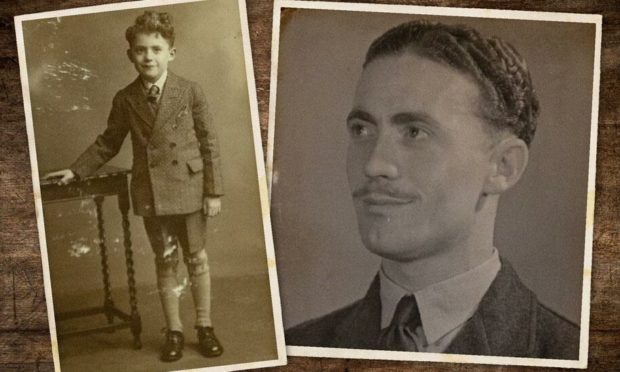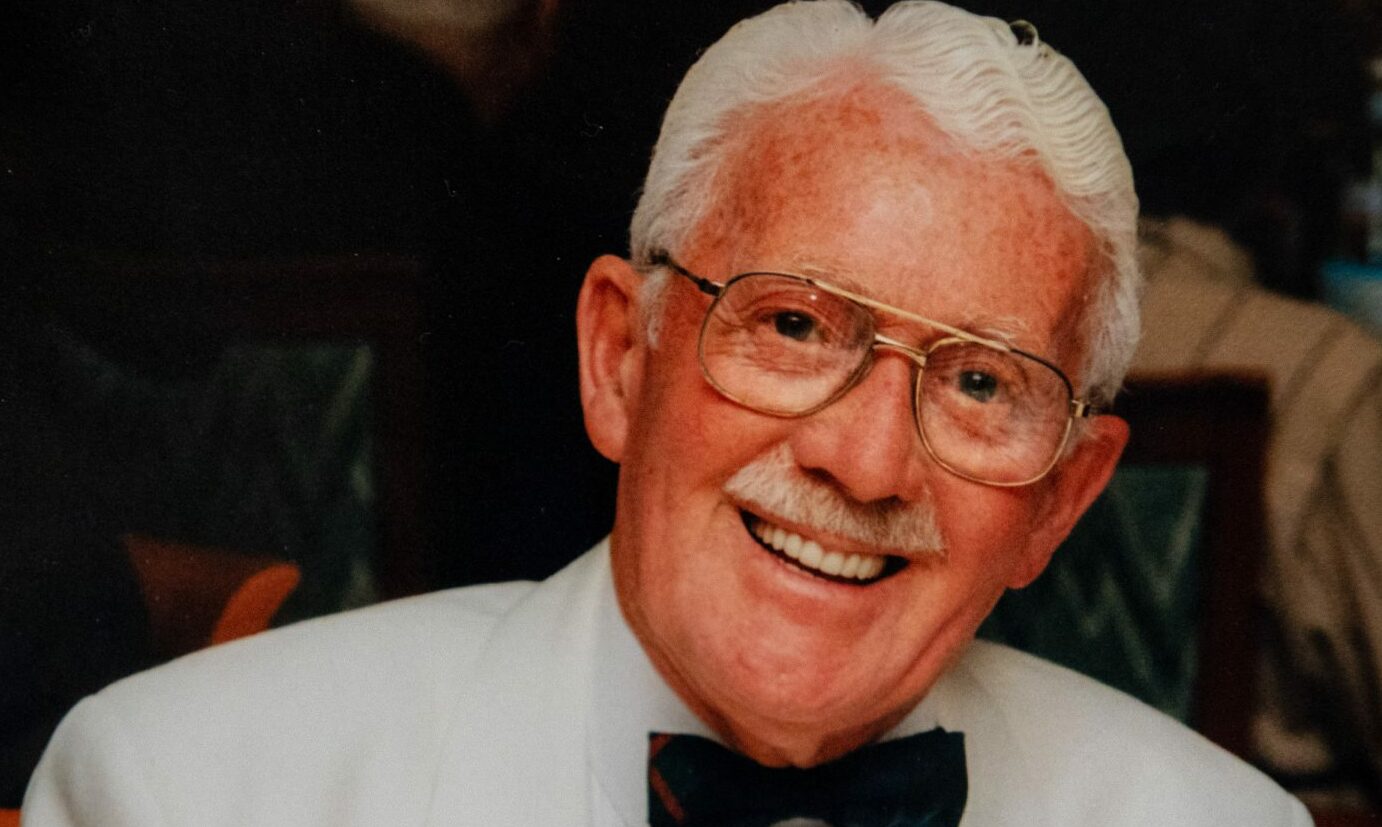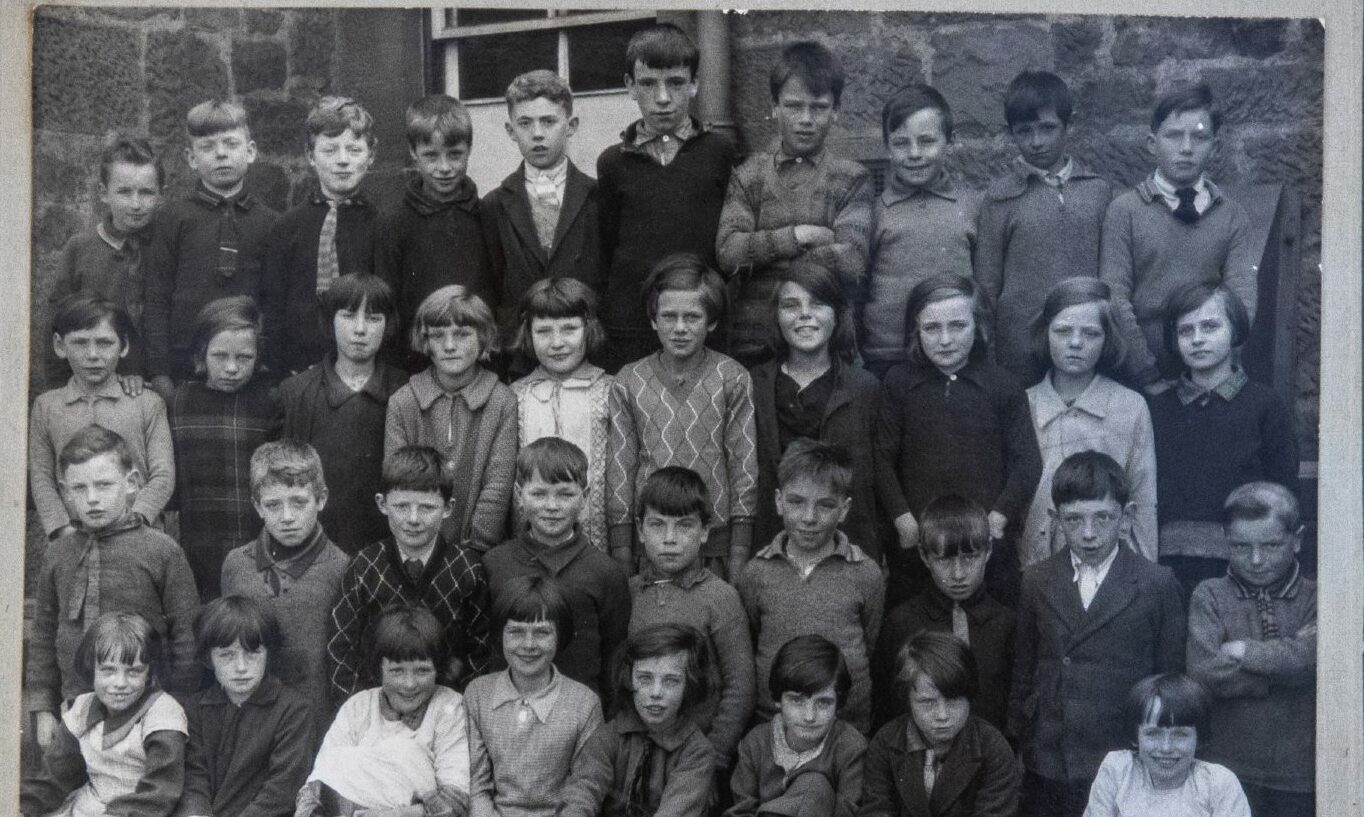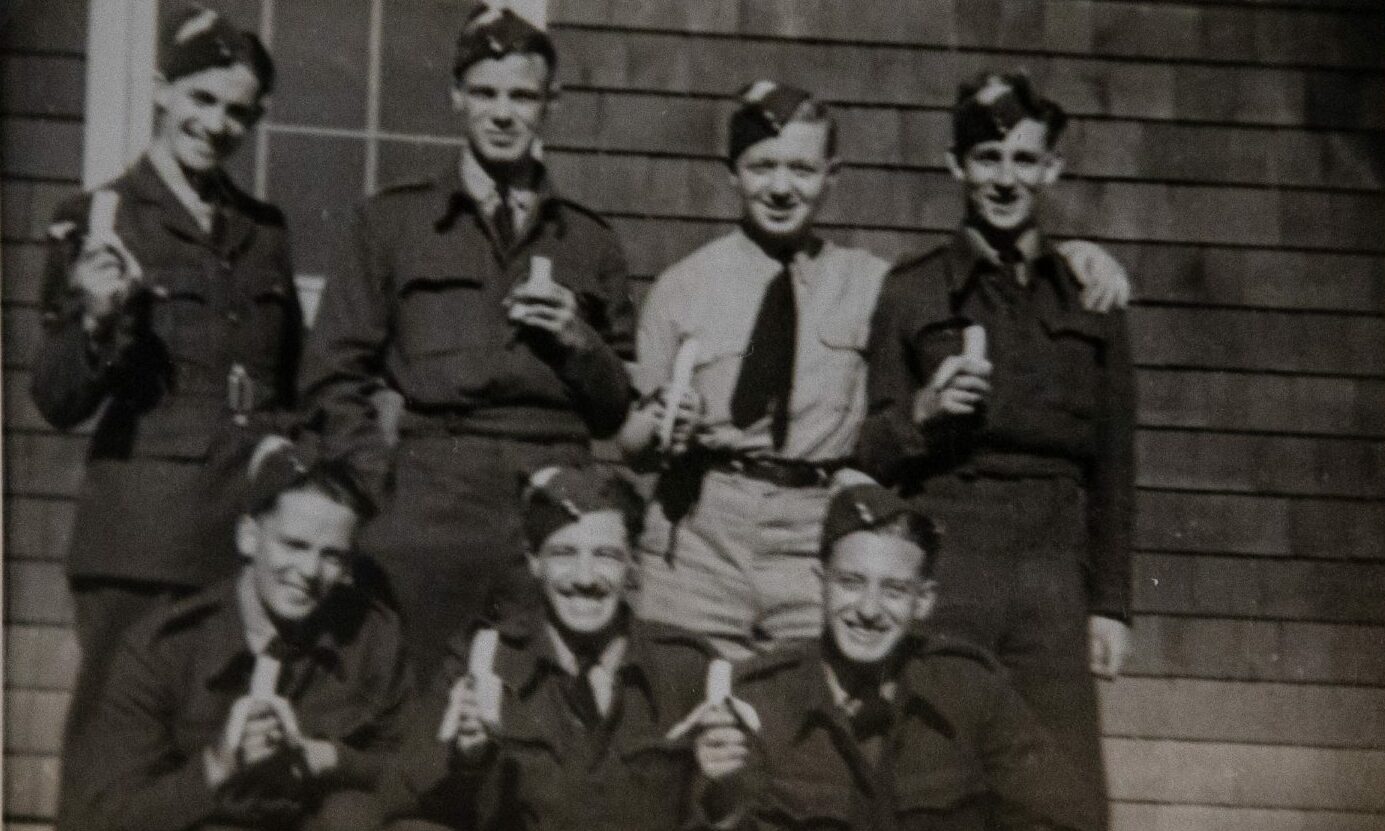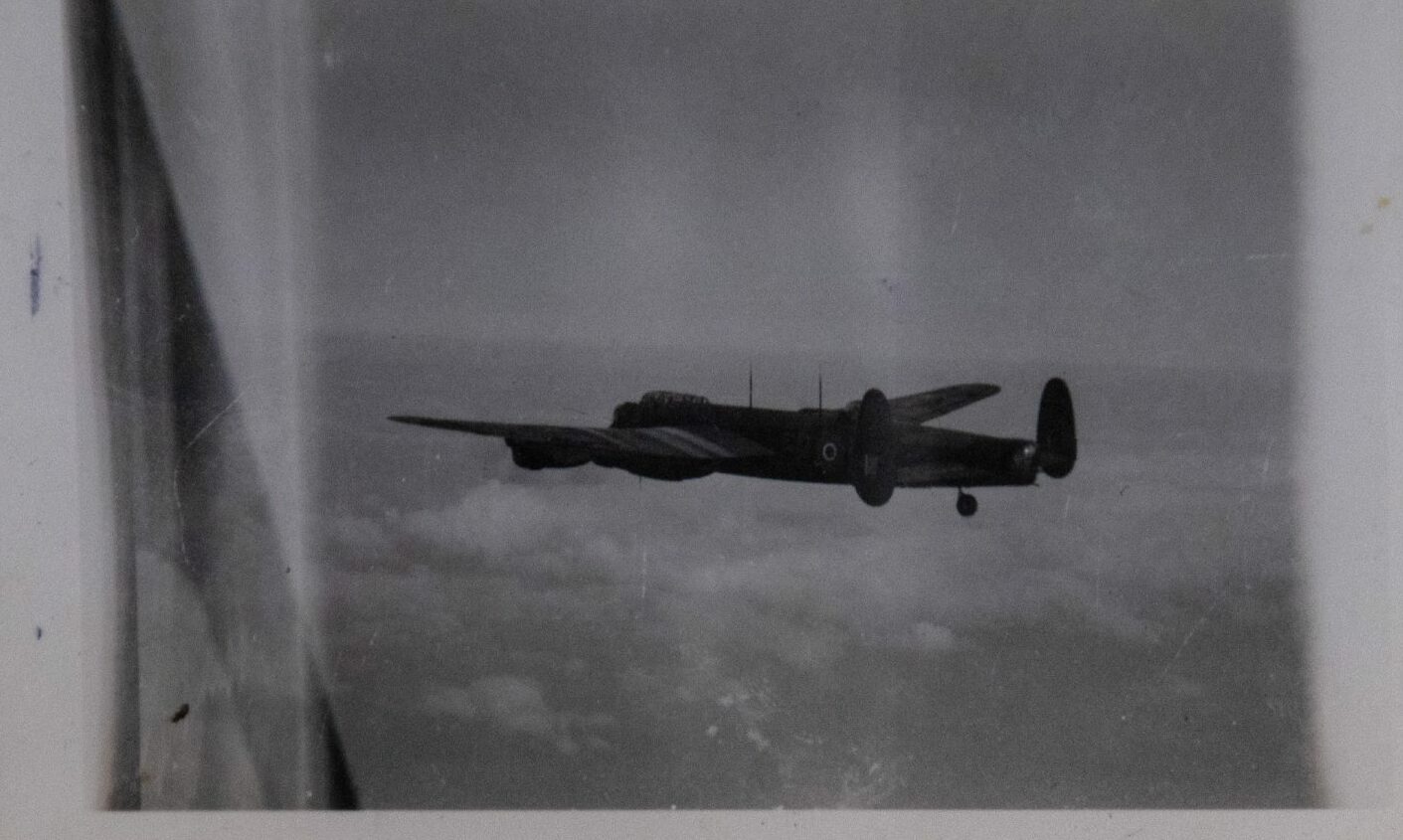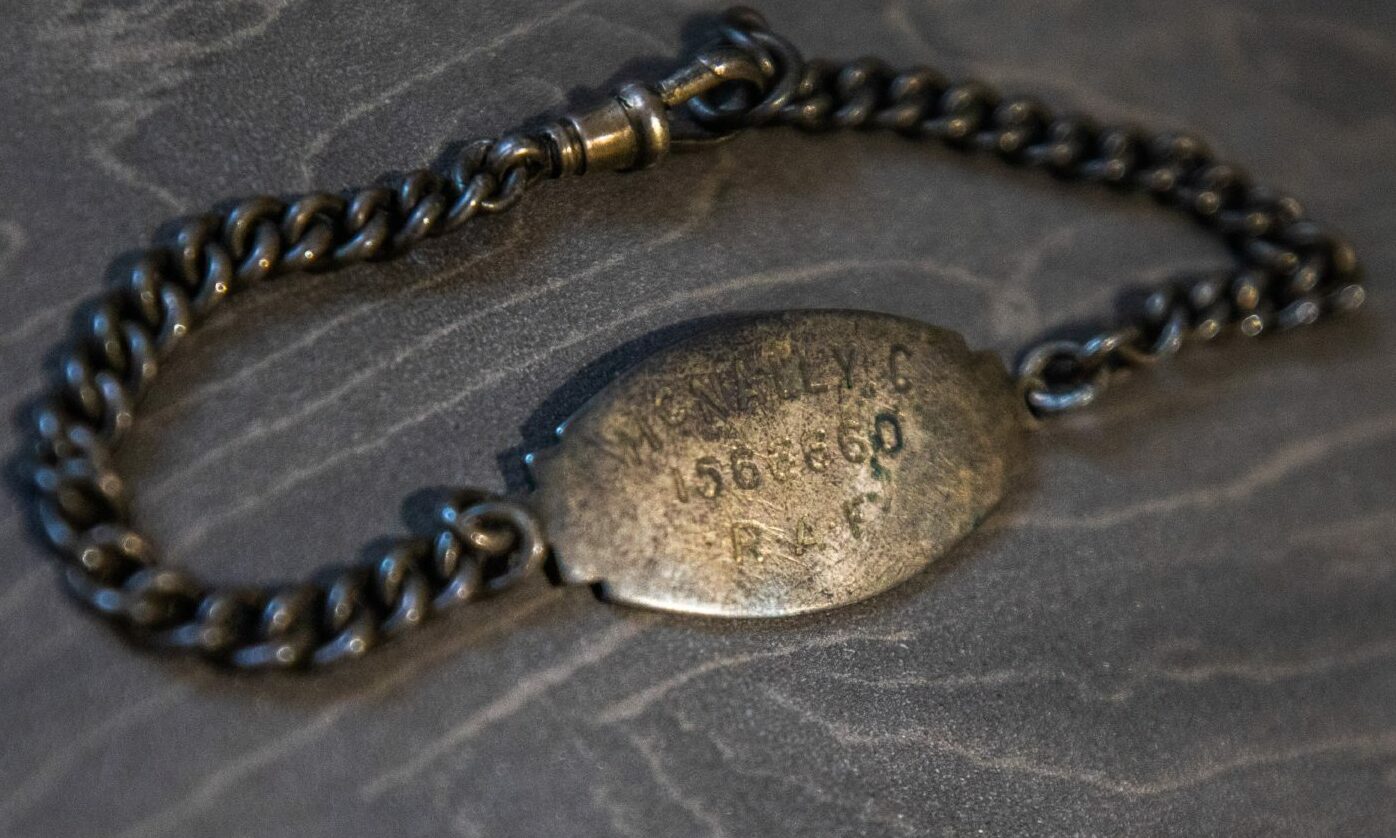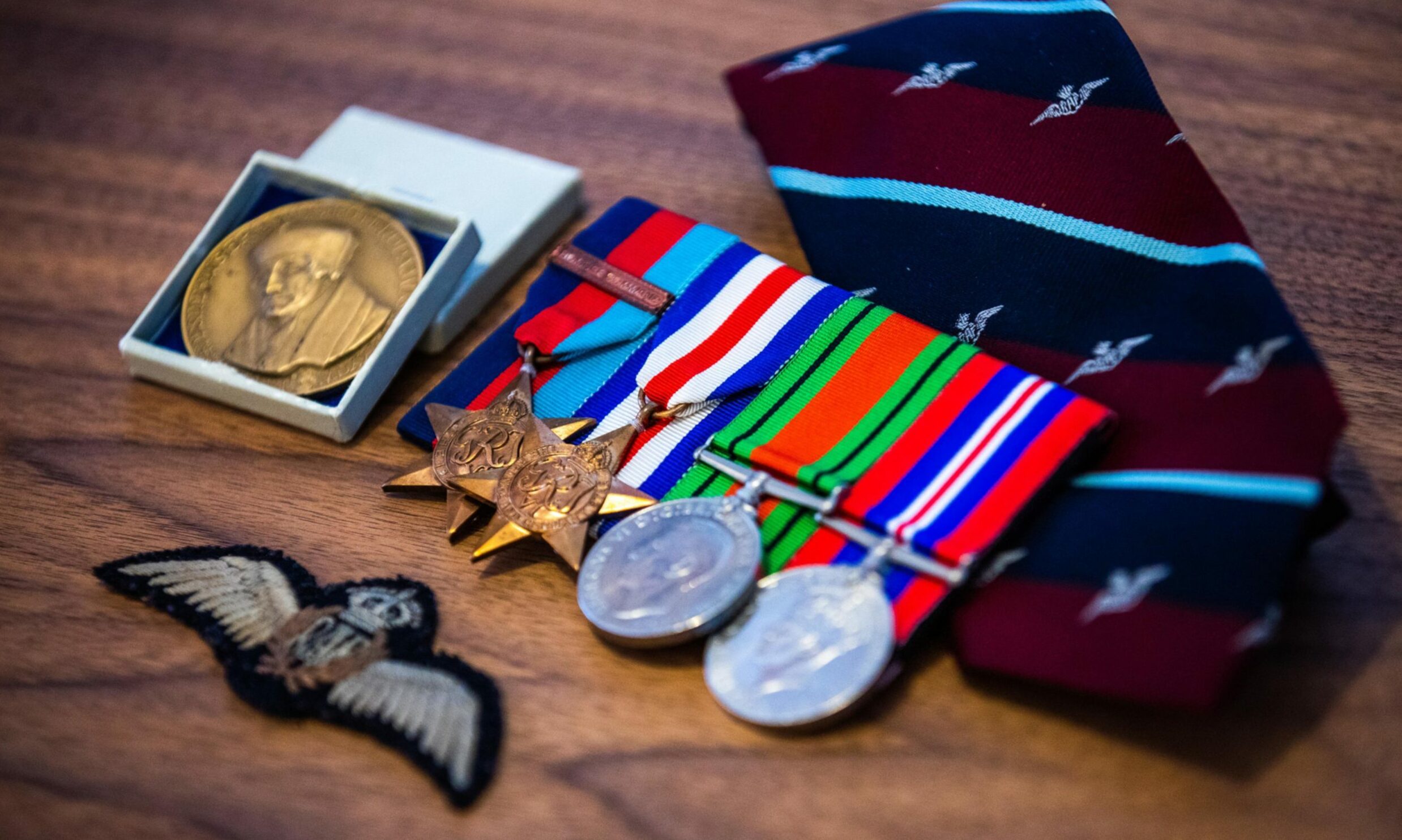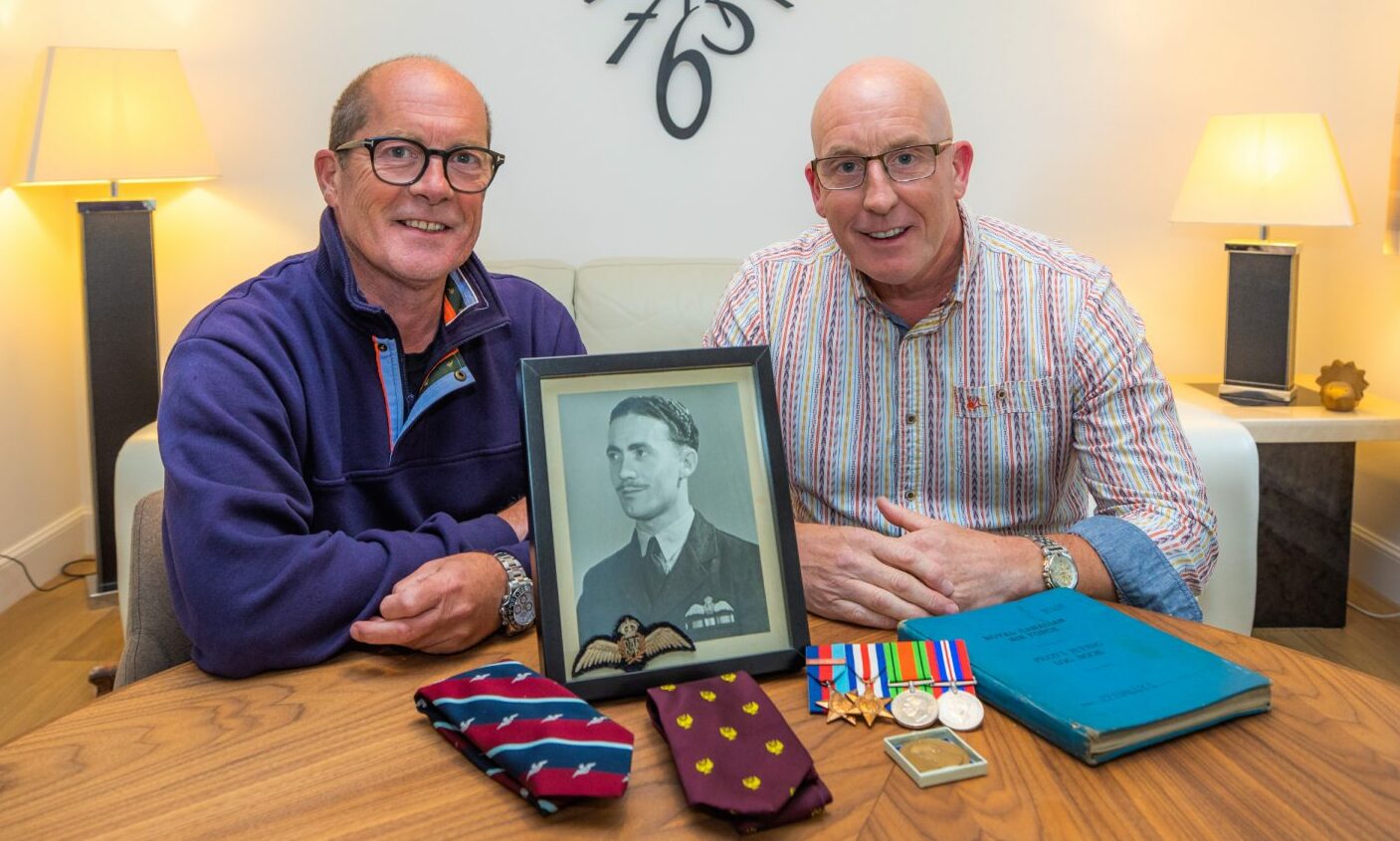Charlie McNally, one of the last pilots to have seen action with Bomber Command during the Second World War, has died aged 99.
Mr McNally took part in raids over Germany in 1944 and 1945, jammed enemy radio signals from the air, dropped food to starving Dutch civilians and helped repatriate service personnel from Italy when hostilities ceased.
Charlie never spoke a word about his war experiences for 62 years until in 2007, when he feared he was facing death and opened up to sons, Ronnie and Stuart.
“He suppressed these memories out of quiet respect for lost comrades,” said Ronnie.
Charlie, of Broughty Ferry, had started life in abject poverty in Lochee, Dundee. He slept in a hole in a wall and his family could not afford to pay for his education after the age of 14.
However, he went on to build a successful career with the Post Office, the RAF, provide a comfortable life for his family and make contributions to community life.
Although he was brought up in a devout Roman Catholic family, his experiences of war saw him renounce his faith.
Charlie (Charles) was born in Brown Street, Dundee, in 1922, the son of Thomas and Margaret McNally. His grandfather James had been brought to Scotland from Ireland by his mother after the Potato Famine.
They had come in search of a better future but poverty continued to stalk the family down the generations and Charlie’s early life was one of great deprivation.
Resilience
However, this experience and his mother’s belief in the value of education, created a resilient young man who would go on to achieve so much.
When he was a small child, the family moved to Airdrie but returned to Dundee in 1933.
Aged 11, Charlie began attending St John’s High School six days a week and achieved six highers with the highest possible marks. He left school at 14.
Post Office
Ronnie said: “He was given a job as a telegram boy, possibly one of the first boys in Dundee from a Roman Catholic background and this was solely because of his outstanding test results.”
By the time war broke out, Charlie was a telephone engineer, a reserved occupation, but he tried his best to enlist.
It was only in 1942 when those in reserved occupations were allowed to join up, that Charlie was able to join the RAF.
He thought his background in telecommunications would lead to a post as a navigator but Charles was picked for pilot training and relished flying Tiger Moths over the English countryside.
Aged 21 in 1943, he sailed to Canada on the Queen Elizabeth and trained on Oxford Five bombers flying over the prairies.
He returned to the UK, where he also trained as a flight engineer, and was stationed for a time in Lincolnshire with Squadron 101, a special operations unit.
Ronnie said: “This was without doubt one of the most dangerous squadrons to be in, with a higher casualty rate than other squadrons.
“Lancasters flew with seven men but Squadron 101 flew with eight. The extra man was a German spy in civilian clothes.
“The squadron’s planes went ahead of the main bombing raid to jam Luftwaffe communications. They were basically the decoys.”
In February, 1945 Charlie’s aircraft was caught in German search beams as they were flying at 19,000. Heavy flak was aimed at the aircraft and they rose to 23,000 feet to outrun the guns and flew south east to Leipzig and to safety.
A few days later, one of his aircraft’s engines failed after a raid over Dortmund and it crashed landed in a field in Lincolnshire.
Charlie flew on further Bomber Command raids on Chemnitz, Kasel, then on the attack on Kiel in which the pocket battleship Admiral Scheer was sunk.
One of his proudest moments of his time in the RAF was being involved in the repatriation of service personnel from Italy at the end of the war.
Another was Operation Manna to drop lifesaving food parcels over the Netherlands.
“He said he could see the children waving as packages of sweets were released at low levels while the aircraft was under fire. This image remained with my father always,” said Ronnie.
Charlie had met his future wife, Margaret, in 1940. She was a switchboard operator at Dundee Eastern Co-operative Society who went on to serve as a corporal in the ATS at Carlisle.
“My mother was due to be promoted to sergeant and posted overseas. This would not have happened if she was married so, on March 21, 1945, my parents married in Carlisle Cathedral.
“As the war ended and having seen the horror it caused, my father renounced his Catholic faith. He believed religion was the root of all wars.”
Civilian life
Charlie returned to civilian life and his job as a telephone engineer before having a successful career in sales with the Post Office.
The family home was a detached house in Broughty Ferry, which Charlie contrasted with his humble beginnings.
He rose to become area sales manager with BT, retiring on his 60th birthday in 1982.
Charlie was devastated when he lost his wife Margaret in 1977.
In 1978 at Broughty Bowling Club where he served a term as president in 1993, Charlie met Isobel and they married in June, 1981. He died just five days before their 40th wedding anniversary.
Charlie was a member of Monifieth Wine Circle, played golf at Carnoustie, served as president of Abertay Probus Club in 1989 and was an active honorary life member.
